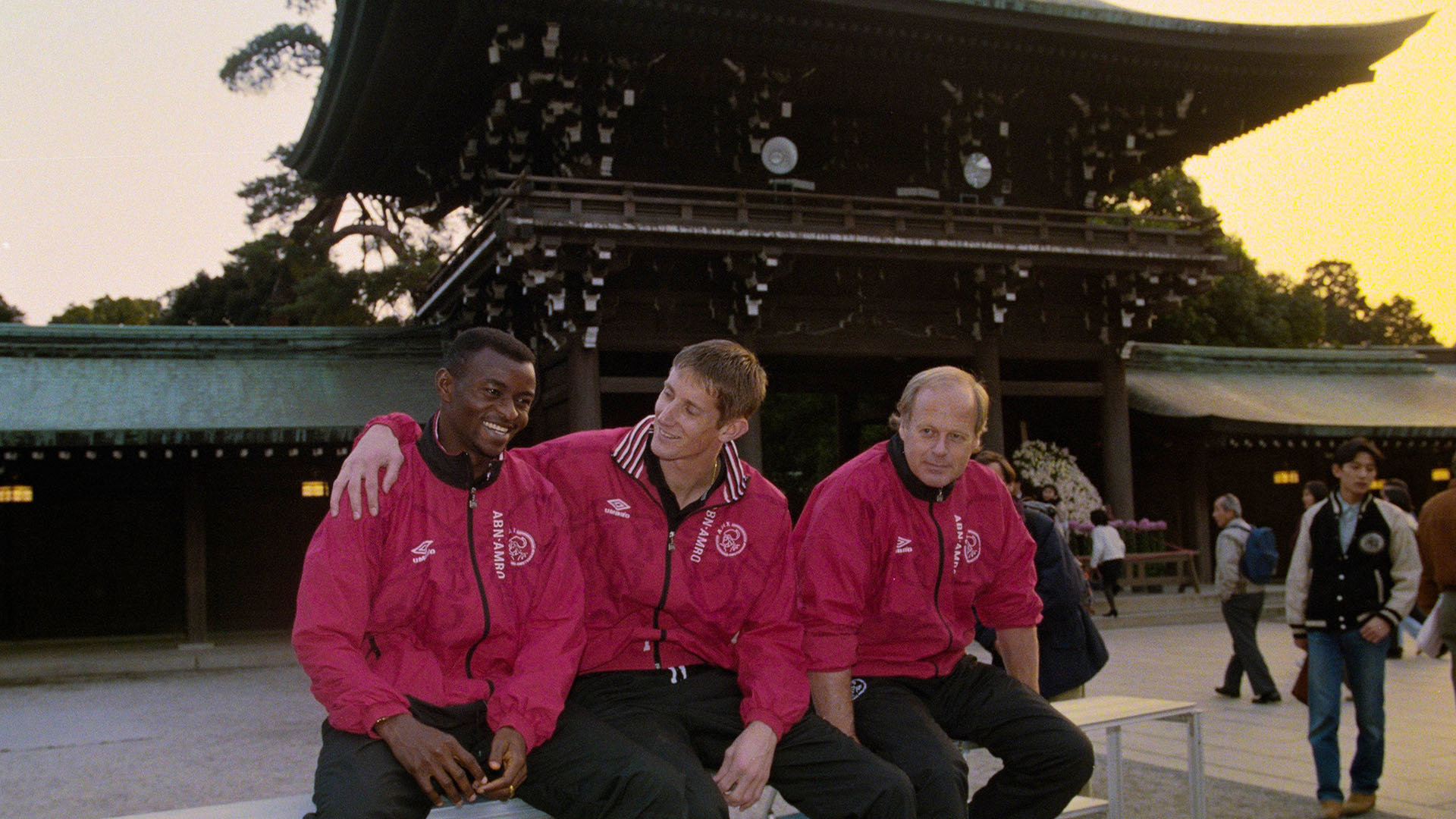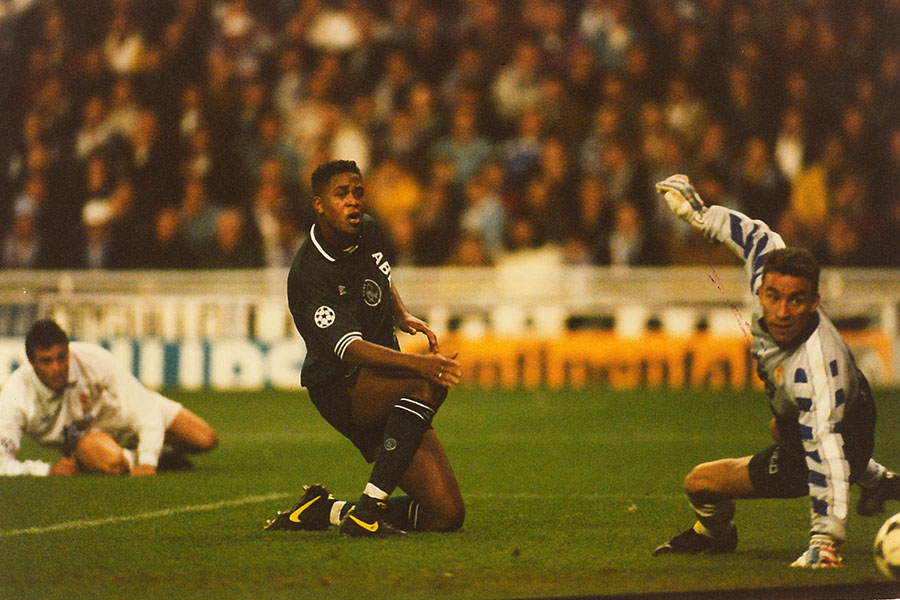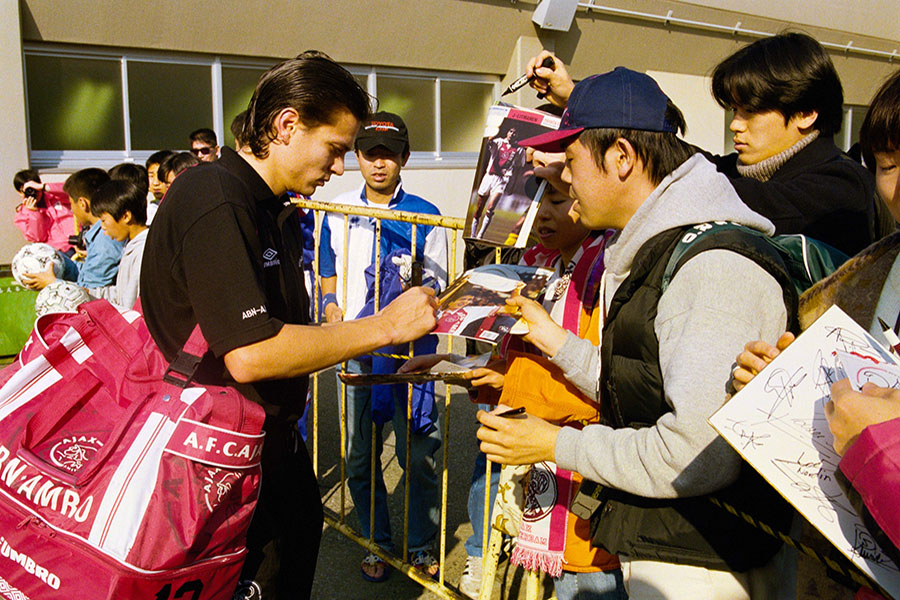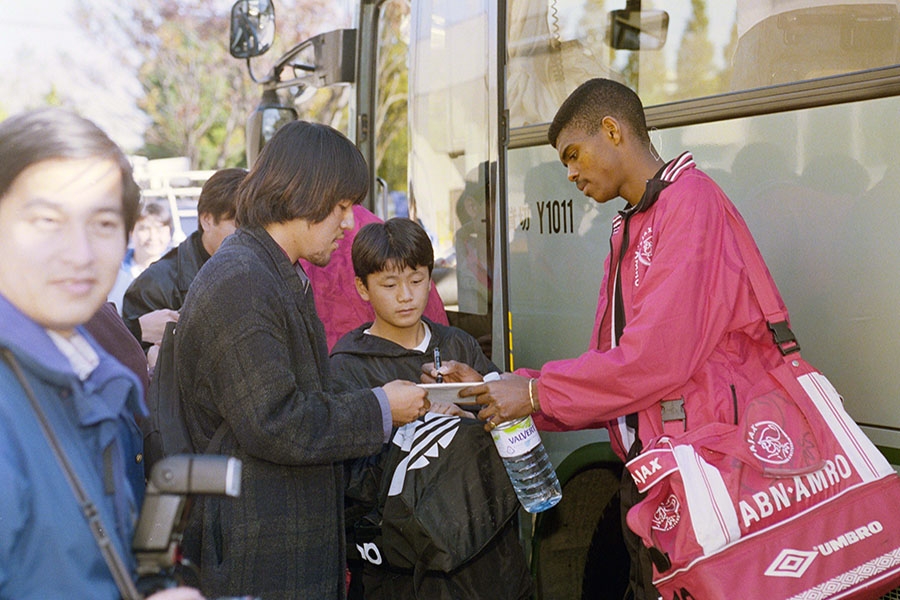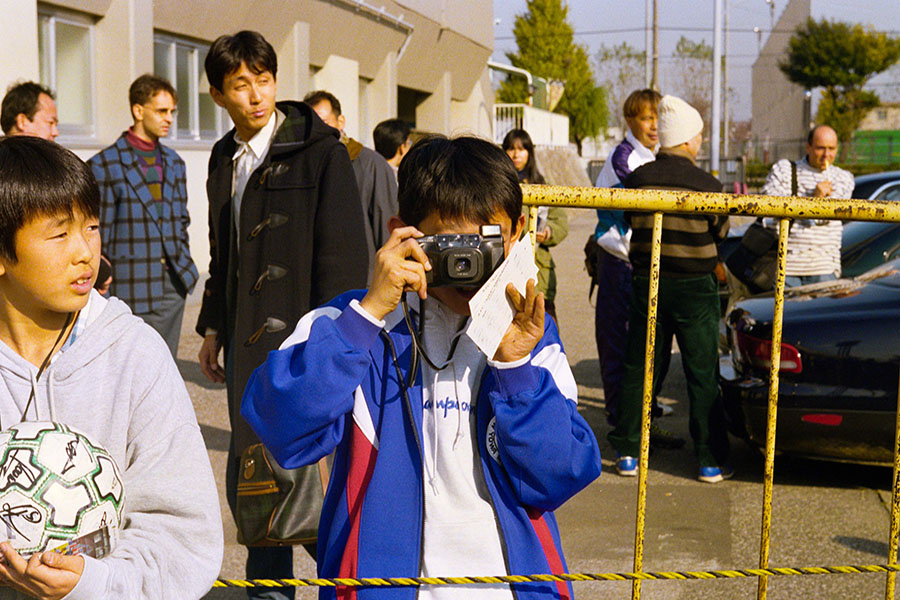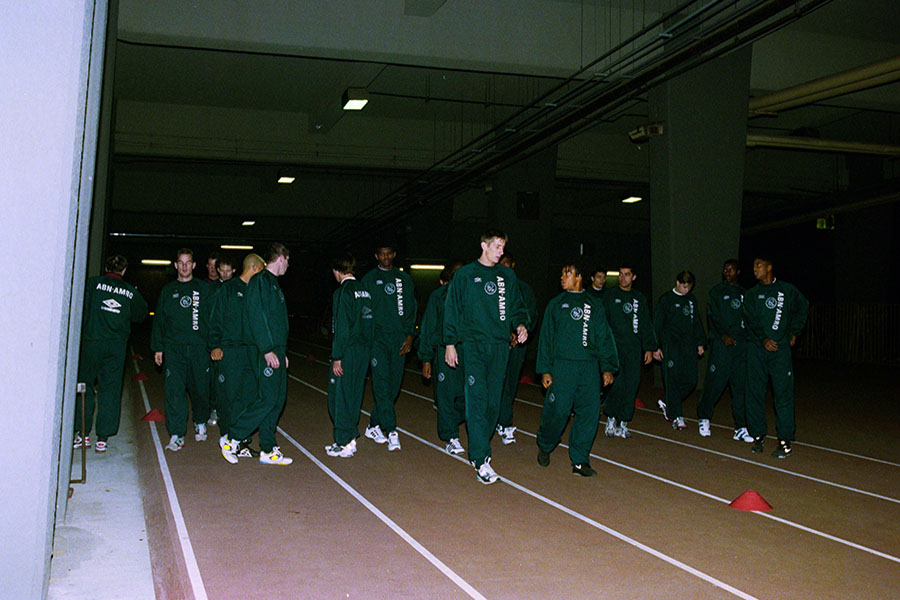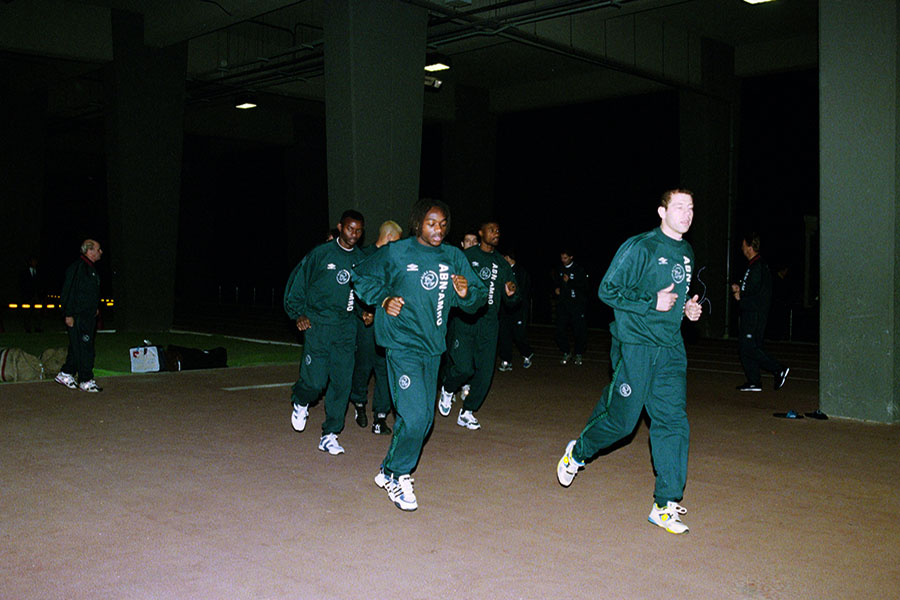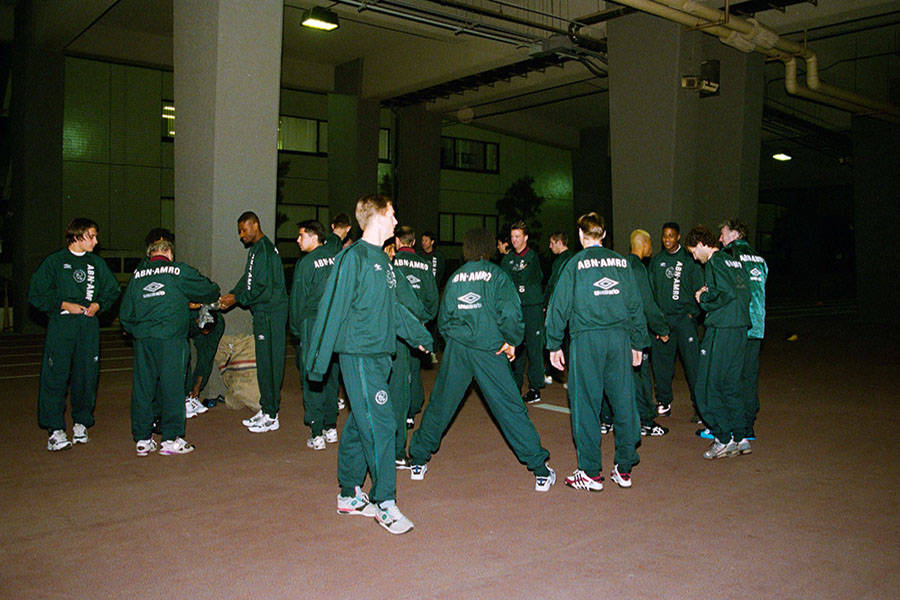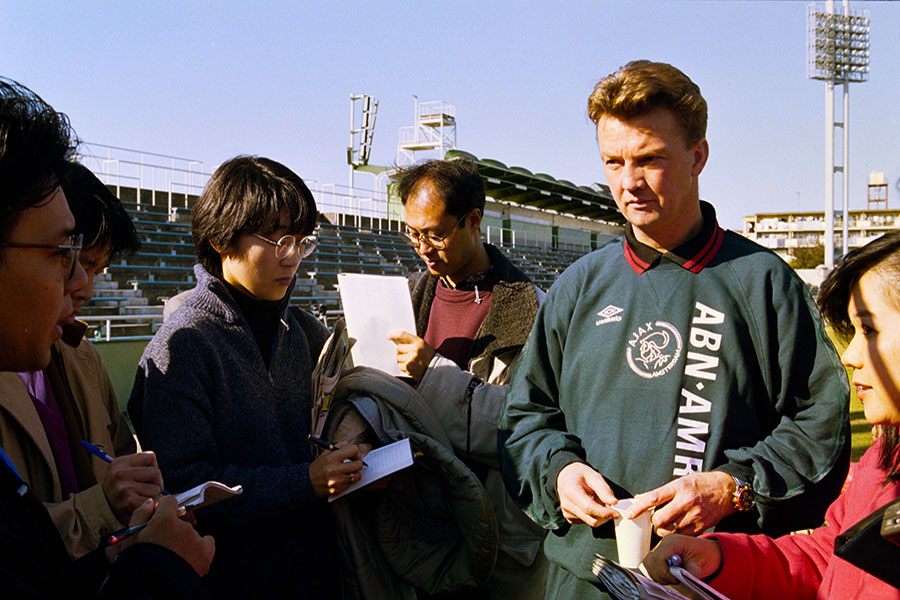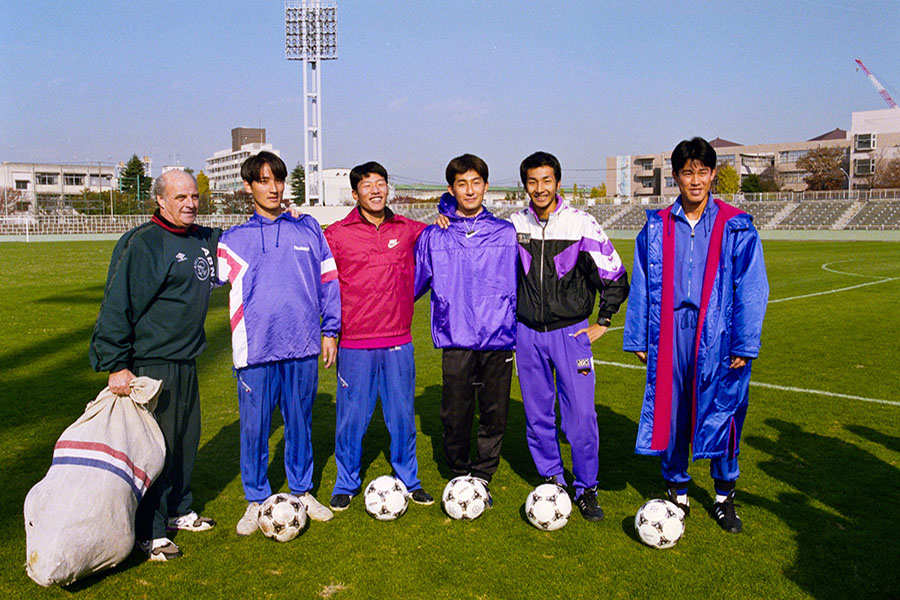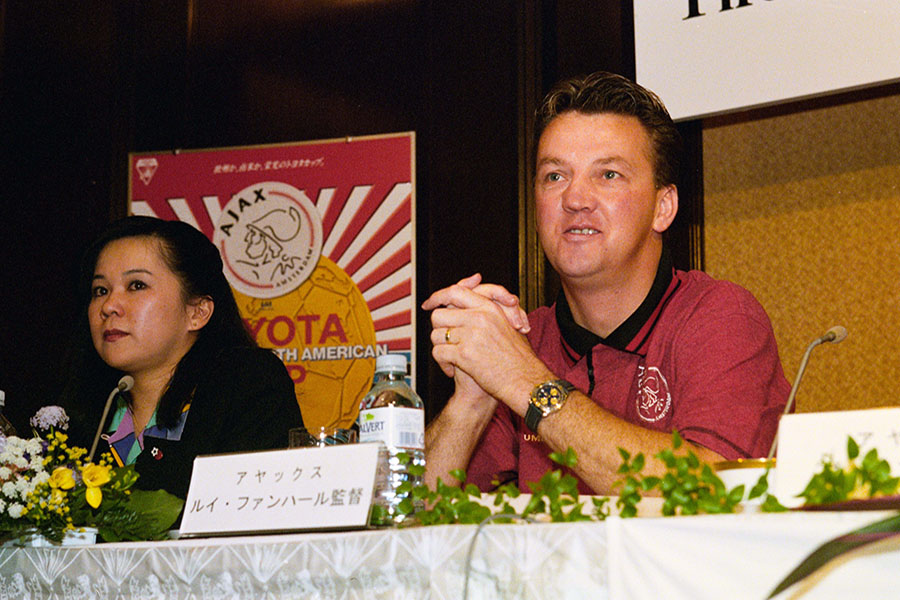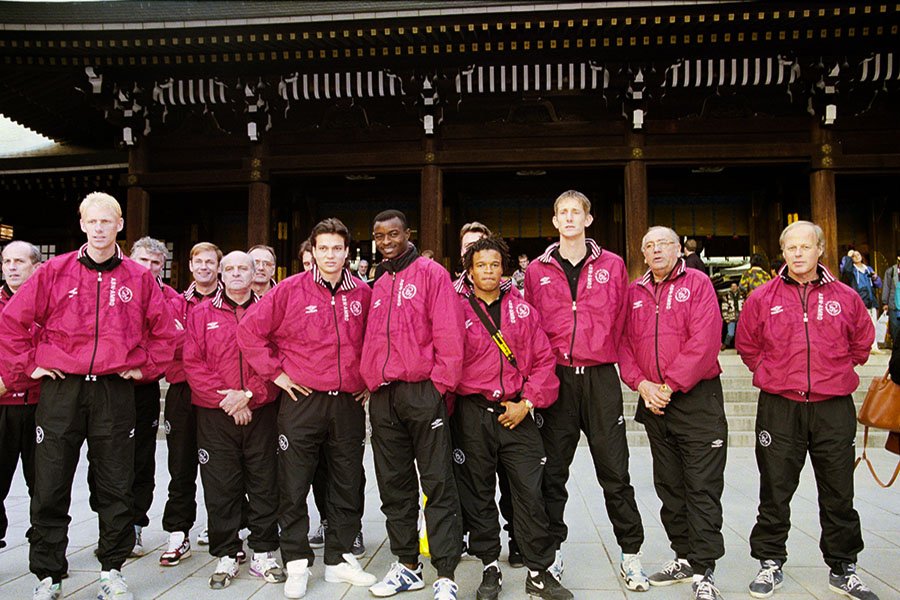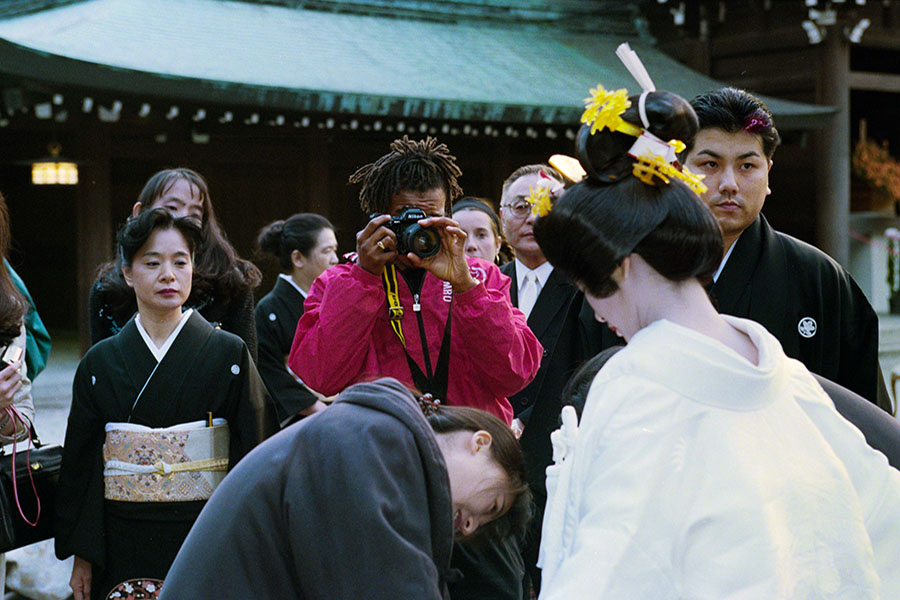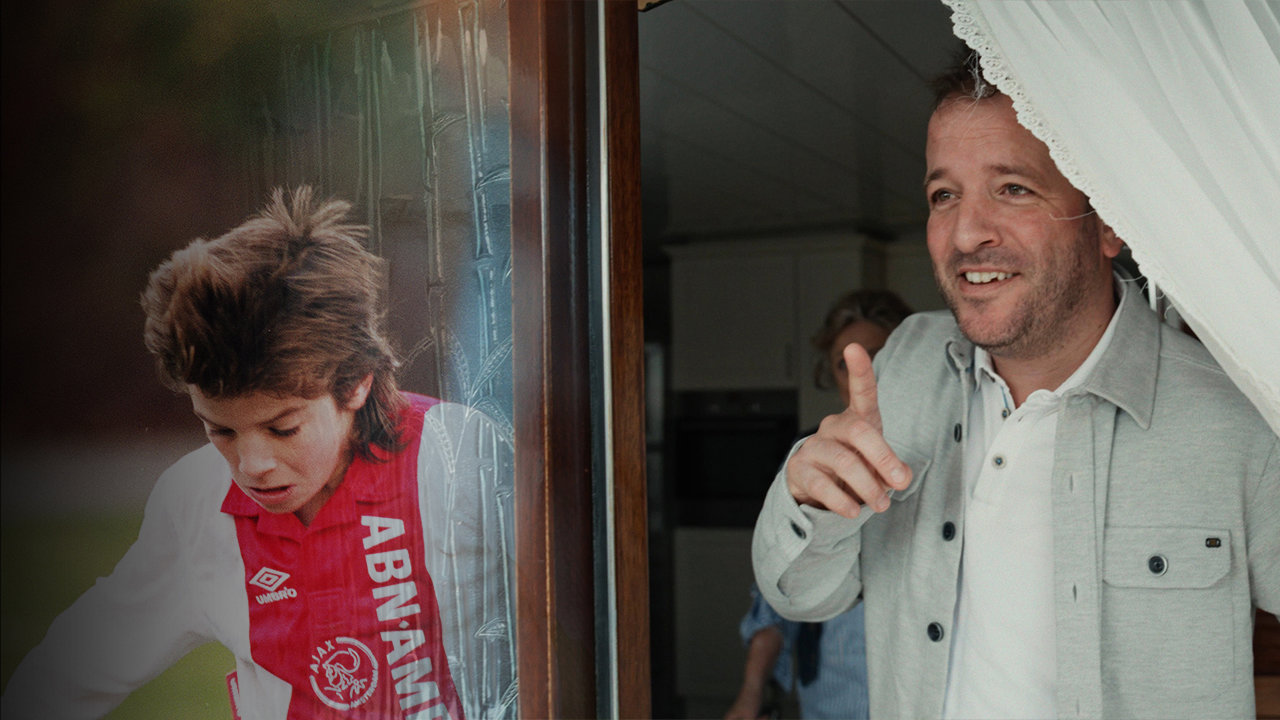It is quite a week leading up to the match in Tokyo. Ajax experience what you might call a ‘killer week’ in late November in 1995. Before the Ajax players of coach Louis van Gaal can travel to Japan, the away game at Real Madrid awaits first. The stake in the UEFA Champions League match at the majestic Estadio Santiago Bernabéu is not insignificant: the top spot in Group D.
Gala performance
On Wednesday 22 November, 72,000 spectators, including 4,000 Ajax fans, witness a gala performance. The Amsterdam side whirl through the football temple as if it were a ballroom. After goals from Jari Litmanen and Patrick Kluivert, plus two Ajax goals wrongly disallowed, a 0–2 final score appears on the scoreboard. One of the finest and most convincing Ajax matches ever is thus also the desired dress rehearsal for the final against Grêmio. Full of confidence, the Champions League winners and therefore champions of Europe can fully focus on the battle with Gremio.
Ajax return to Amsterdam immediately after the match. The next day the long flight to Tokyo already awaits. In the Japanese megacity, Grêmio have already begun their preparations. The opponents from Porto Alegre have had their sights set on the culture clash between Europe and South America for much longer. In fact, ever since winning the Copa Libertadores, the South American equivalent of ‘our’ CL. That is striking, since the Brazilians won their continental title a few months after Ajax’s Champions League triumph in 1994/1995.
Overloaded fixture list
For the Amsterdam side, the overloaded fixture list also ensured that the special match only started to gain real focus relatively late. The club (read: coach Van Gaal) had long set other priorities. The next matches were always the most important for the demanding coach and his men. Grêmio’s focus lay elsewhere. The closer the meeting came, the more often coach Luiz Felipe Scolari gave his key players time off.
Where Van Gaal continued to field his strongest players, ‘Big Phil’ made his line-up in league matches subordinate to the looming contest in Tokyo. For less important matches, Scolari often fielded a souped-up B team. All with the intention of having as fit and strong a squad as possible for Japan. Compared with Europe, the battle between the continental champions is anticipated far more strongly in South America. More intensely.
It is also a cultural thing. For Brazilians, the opportunity to become world champions weighs more heavily than for the usually down-to-earth Dutch. For Brazilians, nothing is more glorious than a world championship. After the national team’s success at the 1994 World Cup in the United States, a unique double success beckoned at the end of 1996. At club level, too, the proud Brazilian club wanted to be the best in the world. Football lovers in the football-mad nation followed along in hope.
Because of the B teams Scolari often fielded, Ajax’s preparation was also different than usual. Ajax’s master scout Ton Pronk made only a single trip to Brazil beforehand to see Grêmio with his own eyes. Normally the number of scouting trips was higher, certainly for an important match. But the risk of seeing a kind of reserve side, and thus essentially travelling for nothing, made such a trip less valuable.
The vast majority of information about Grêmio therefore came from the faxes that Ajax’s spies in Porto Alegre regularly sent to De Meer. The VHS tapes in the office of ‘director of professional football’ Louis van Gaal were also crucial sources of information; they contained footage of the most important matches of the upcoming opponent. The internet was still in its infancy in 1995 and mobile phones were not yet in common use.
Results
In the Netherlands — or rather Amsterdam — the battle for the world title initially received less attention. ‘Ajax want to win the Intercontinental Cup — also known as the Toyota Cup, a sponsor thing — but “Tokyo” must not come at the expense of the league and the Champions League,’ writes Ajax chronicler David Endt in the Official Ajax Yearbook 1995/1996. Referring (among other things) to the gala performance at Real Madrid: ‘The results indicate that this approach is the right one.’
The day after the gala match in Madrid, the entire squad departs from Schiphol. Even the Ajax players who were not in the match squad were invited by the club to travel along. On Thursday 23 November, the Ajax delegation flies at 14:50 on the KL 681 to Tokyo. With ‘Madrid’ still in their legs, the Ajax players face a flight of 13.5 hours. Ajax’s club photographer Louis van de Vuurst is, of course, also on board. Some of his photos are being shown on the Ajax channels thirty years later for the first time.
In addition to the thousands of kilometres, the Amsterdam players must also bridge a significant time difference. Compared with the Netherlands, Japan is eight hours ahead. Time travel — 13.5 hours and across various time zones — causes jet lag. To counter this as effectively as possible, Van Gaal has again urged his players at departure to listen carefully to their bodies. Excessive fatigue must be reported.
At 10:00 on Friday morning, the Ajax players set foot on Japanese soil for the first time. Waiting buses take them to the luxurious Imperial Hotel. Ajax have the entire eighth floor at their disposal during these days. Staying awake is the rule for now. To help with that — and especially to shake off the stiffness after the flight — the first training session takes place in the evening. The concrete ring and the tartan track next to the National Stadium are used mainly for acclimatisation.
At times hilarious press conference
Shortly after returning to the Imperial Hotel, a press conference follows that is at times hilarious. Alongside captain Van Gaal and his captain Danny Blind, Ronald and Frank de Boer join the table. The Ajax players noticeably struggle to adjust to the Japanese language, speech patterns and translations. The nameplates in front of them display the names of the Ajax players in Japanese script.
The first encounter with the predominantly Japanese press corps has an additional side effect. In the packed room, the pre-match tension among the Ajax players increases slightly. The realisation that a unique opportunity to make history awaits becomes stronger. Only once before could the club call itself the best in the world. That privilege belonged to the golden generation of Ajax players in 1972, by then 23 years ago. The newest ‘golden squad’ want nothing more than to equal that achievement and help Ajax to global success once again.
After a night that unfolds somewhat chaotically due to lack of sleep, the Ajax players are at breakfast early on Saturday. Almost collectively, the players and staff have woken at five in the morning. Not long after waking up, they exchange sleep experiences at the breakfast table in the dining hall on the eighth floor. This first full day in Japan is devoted to training at ‘proper’, full-fledged facilities. Ajax train at the Nogaoshka Stadium, about three to five quarters of an hour away. Travel time depends on traffic in the metropolis.
Psychological victory
It is that Saturday afternoon that Ajax win their first battle. A battle at the table, admittedly, and one that brings no trophy, but still. A psychological victory. Ajax officials have barely sat down with their counterparts from Grêmio and the match organisers when a dispute breaks out over the kits. Both clubs want to play in full home kit and refuse to budge. Ajax win and are allowed to wear their kit with white socks. Grêmio lose and must wear black socks.
The question of how many foreign players may be fielded also leads to a dispute. Two, as is normal in Brazil? Or four, as Ajax propose? Referee David Elleray has to flip a coin to reach a decision. The Ajax delegation smile as they see that this second battle is also won.
The players and coaches enjoy a free afternoon. The entire Ajax delegation sit down for dinner at a teppanyaki restaurant. From the griddles beside the tables, the Japanese specialities find their way to the plates swiftly and effortlessly. The hungry Ajax players relish the local delicacies.
In the first days, Van Gaal adjusts his training sessions — or rather: training intensity — based on feedback from the players. Until two days before the match, the Ajax players are given time to acclimatise. Only on Sunday afternoon, 26 November, do they really train hard for the first time. Preparing for the match now truly begins. A first match briefing is part of that.
Japanese art and culture
Later that day, the Ajax players who wish to do so sample Japanese art and culture. Yoyogi Park is a gathering place for Tokyo’s youth. Bands noisily compete with each other. When the Ajax players wander into a traditional Japanese wedding, the Dutch photographers and video journalists leap into action.
Not only do the journalists record the encounter, Edgar Davids also seizes the moment. The passionate photography enthusiast keeps his camera ready. It results in beautiful pictures of footballers in training kit and Japanese guests in elegant wedding attire. The players who stayed at the Imperial get some rest. Another small group strolls through nearby shopping streets and the shopping mall.
When the group is complete again and dinner has been enjoyed, the Ajax players return to the now fairly familiar eighth floor. But before they disappear into the lift, an old acquaintance is welcomed. Frank Rijkaard and his wife Monique also take up residence in the Imperial Hotel. Without the now-retired Rijkaard, Ajax would probably not have won the Champions League the previous season.
World citizen Rijkaard
The former Ajax player is in Tokyo at the invitation of his shoe sponsor, the Japanese brand Asics. World citizen Rijkaard already knows the world city quite well; as an AC Milan player, he became world champion twice in Tokyo. The Amsterdammer will of course attend the match and also give several clinics. The greeting and reunion are extremely warm.
Is Franklin Edmundo Rijkaard the talisman Ajax undoubtedly need in the battle against the cunning Grêmio? Only one more training day separates the Ajax players from the Matchday on which new history can be written…
